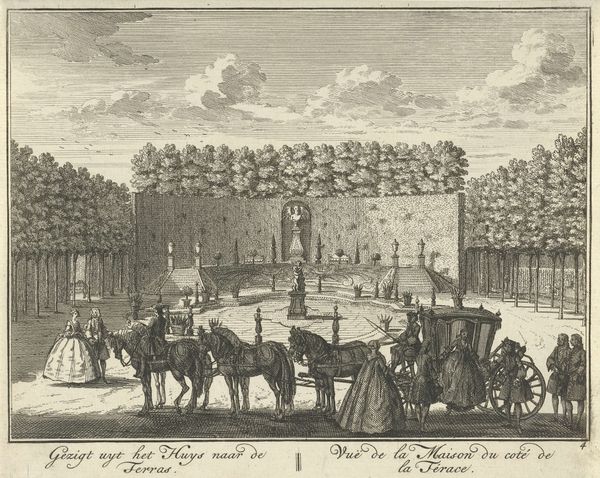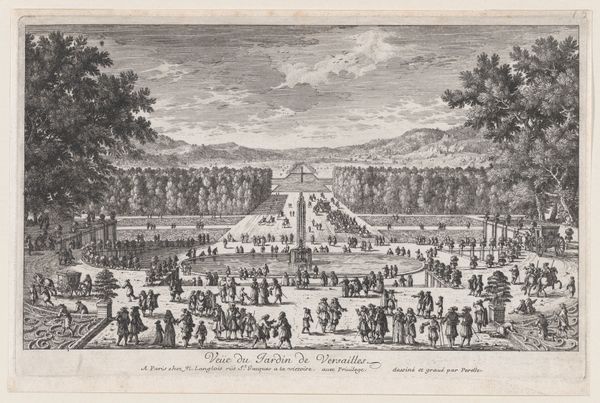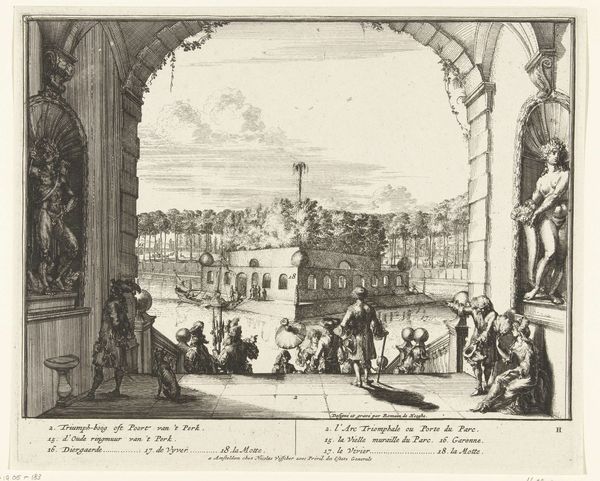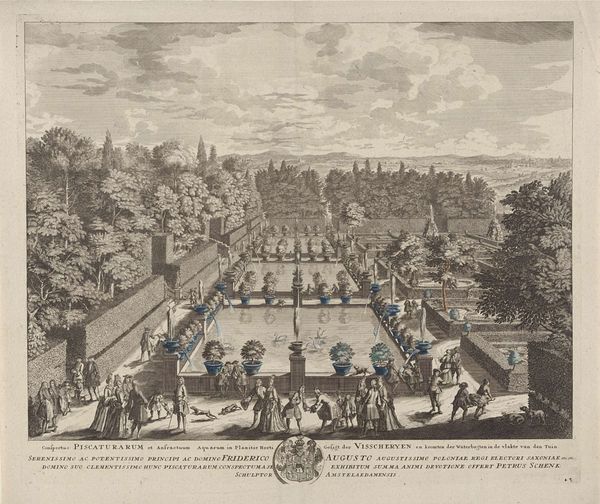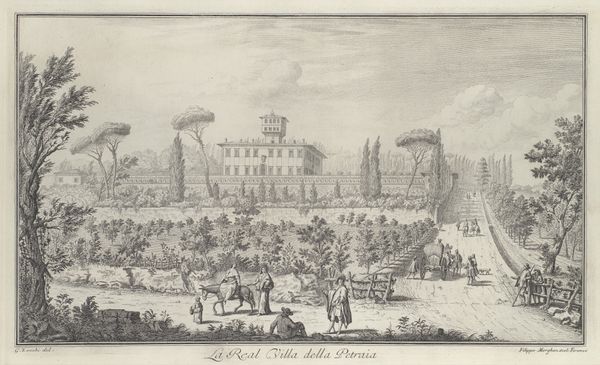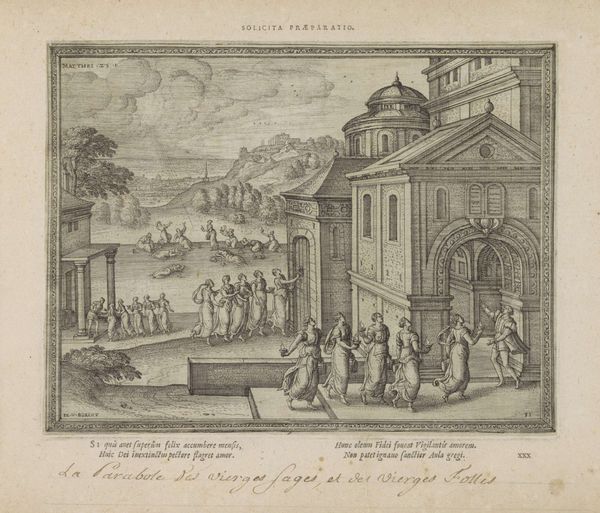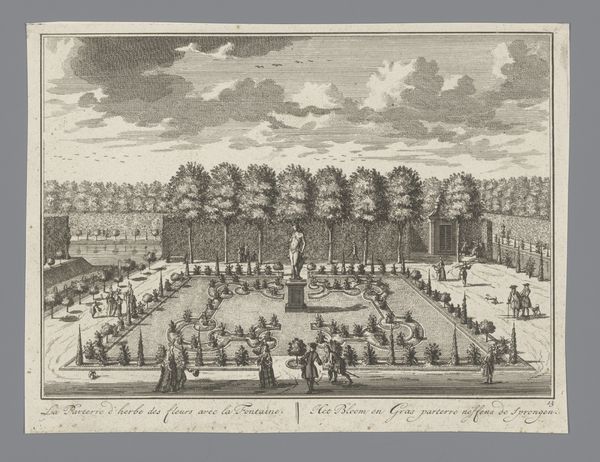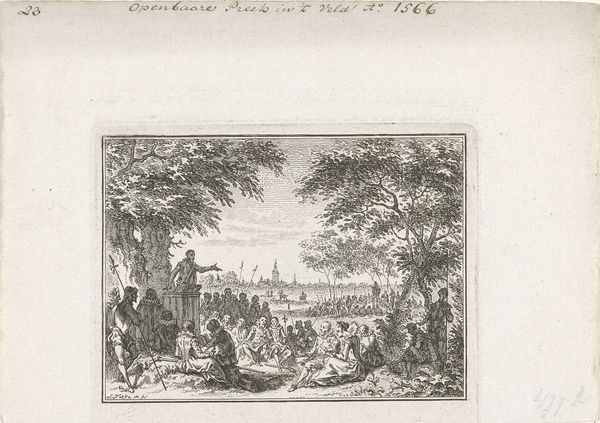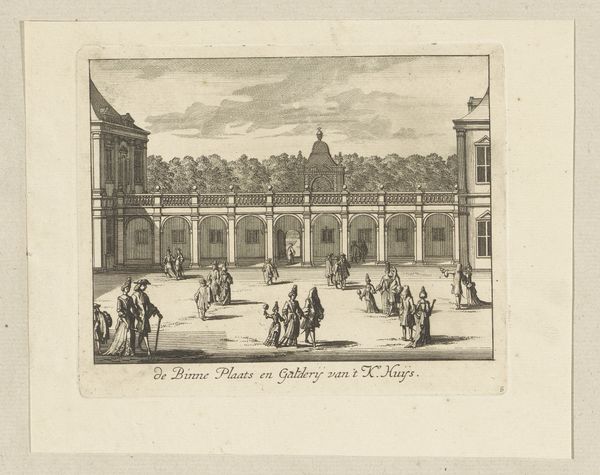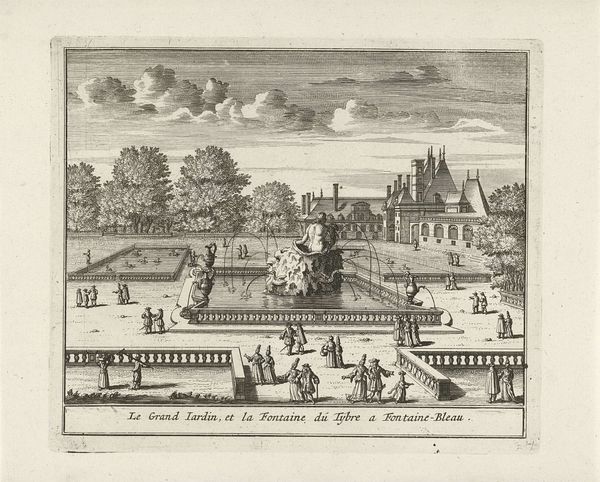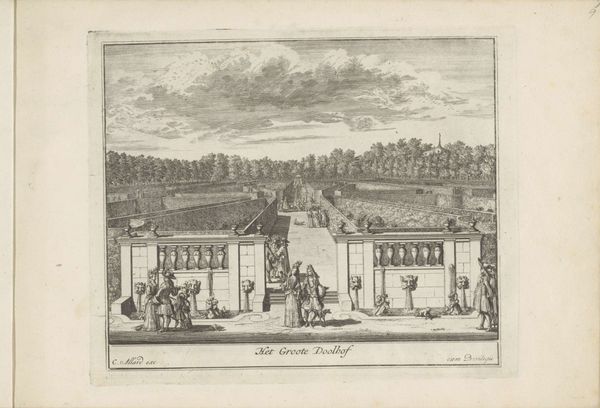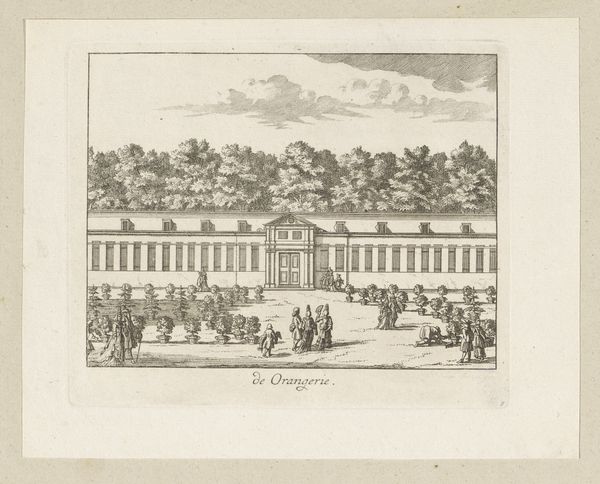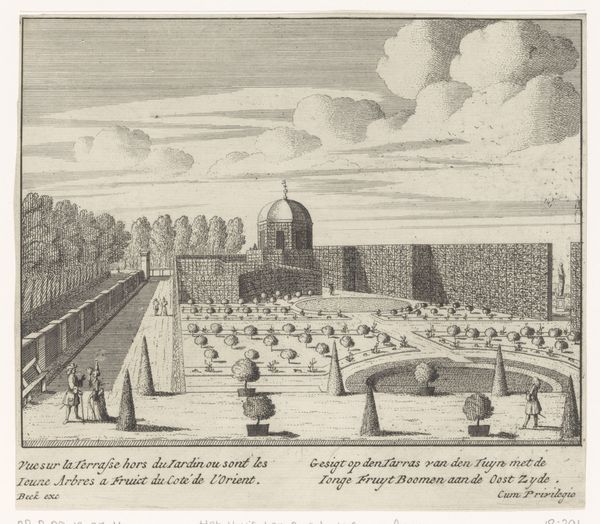
Gezicht vanaf het amfitheater over de tuin naar Paleis Het Loo 1689 - 1702
0:00
0:00
print, engraving
#
baroque
# print
#
landscape
#
engraving
Dimensions: height 172 mm, width 207 mm
Copyright: Rijks Museum: Open Domain
Curator: Here we have "Gezicht vanaf het amfitheater over de tuin naar Paleis Het Loo," or "View from the amphitheater over the garden to Het Loo Palace." It's an engraving, dating from between 1689 and 1702, created by Laurens Scherm. It's part of the Rijksmuseum collection. Editor: My first impression is one of absolute, almost stifling order. It's like every tree, every bush, every… dog is in its perfectly designated spot. There's an unsettling sense of control. Curator: Absolutely. Think of the palace and gardens as an overt expression of power. Landscape architecture in this period was as much about domination as it was about aesthetics. The Baroque style here, with its precise symmetry, the strict geometry of the garden, really enforces a sense of imposing control. It’s literally a staged area where power parades itself. Editor: And the figures—they almost seem incidental. They’re swallowed up by the grand design. I find myself wondering about the laborers. All this manicure requires upkeep. Who were these men and women maintaining this illusion of perfection? We need to address not just the royalty portrayed in the art but the working class responsible for it. Curator: That’s a powerful point. There is an interesting tension at play—between this curated nature and the hint of the wild sky, and between the elites promenading and the countless anonymous bodies making this garden exist. It gives one pause. Editor: It’s hard to ignore the social stratifications being visualized. We should be looking for how these seemingly idyllic scenes reflect and reinforce power dynamics, social expectations, and gender roles of the period. But still, the sky...the light is also undeniable and that feels almost… rebellious. Curator: You know, I can't shake the idea that something organic and untamed, however subtly, can resist even the most rigid structures of oppression. It has changed the way I reflect on it. Editor: And maybe that is a metaphor for our resistance and should provide us with strength today!
Comments
No comments
Be the first to comment and join the conversation on the ultimate creative platform.
